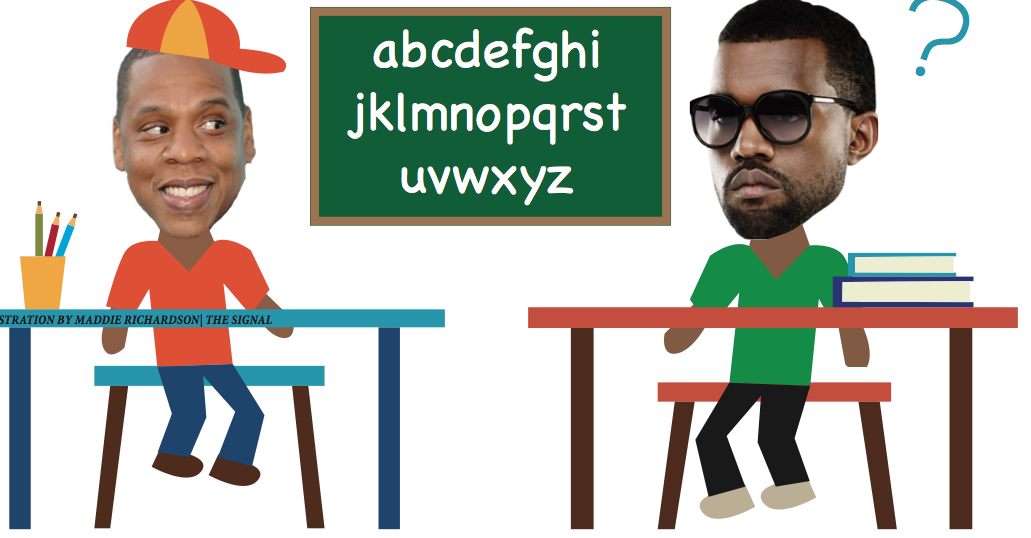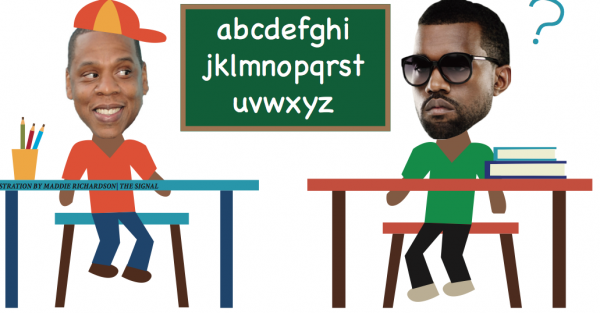
Students taking English 2169 at the University of Missouri will need a copy of Jay Z and Kanye West’s “Watch the Throne” album for the course. The course analyzes the works of Jay Z and West, revering its poetic form. Led by Andrew Hoberek, the course is one of several cutting-edge courses that are breaking the mold of traditional college courses: pop culture-themed courses.
These unorthodox approaches to classical theories allow seemingly outdated material to thrive in a new century. More importantly, I feel that these courses not only bridge the gap between centuries but also between cultures, and Georgia State’s campus provides ideal grounds for this bridge.
Georgia State has a colorful assortment of races, ethnicities and, subsequently, cultures, deeming it the South’s most diverse campus and the country’s twelfth according to U.S. News. We can witness this with a simple stroll through the Plaza where we see a sea of several different shades and hear the melodies of several different dialects.
Students from all backgrounds respectfully coexist. But simply coexisting isn’t enough. While we hold the diversity gold medal, student disengagement due to differences in race/ethnicity/culture has been a concern of both students and scholars lately.
When asked by Creative Loafing about this student disengagement on our campus, Dr. Dhanfu Elston replied, “There’s this undertone and underlying social climate that people don’t tend to talk about publicly very often.” This type of social climate has been the breeding ground for numerous misconceptions and stereotypes of other races/cultures/ethnicities.
So, forming both an understanding and appreciation for other cultures is necessary for the vitality of a healthy social environment. It will enrich the student’s collegiate experience and pop culture-themed courses will aid in doing so.
Our taste in music is just as diverse as our campus, and, oftentimes, culture will coincide with musical genre. While mostly rap/hip-hop can be heard on several occasions throughout the Plaza, there is certainly a fan of each musical genre on our campus. It is through this shared love of music – one of pop culture’s vehicles –and the study of its lyrics that we can bridge this cultural gap and extirpate student disengagement. So how is this possible if we don’t share the same love of different musical genres?
The literature of lyrics is a language all in its own and can be understood by everyone, no matter your background. One message can be derived from several lyrics that span across several genres. Take the following two lyrics from two different genres:
“Okay, so you’ve got a car. That don’t impress me much/So you got the moves but have you got the touch” -Shania Twain, “That Don’t Impress Me Much,” genre: country.
“A woman, she needs more than material things/And a woman, needs so much more than what a man can say” -Mary J Blige ft. Beyonce, “Love A Woman,” genre: R&B;
Here is a clear example of a message – materialism and its relationship with society and gender – from two different sets of lyrics, two different genres.
This example speaks to some life experiences that we all go through, no matter what our background is. If we were aware of our shared experiences, there would no doubt be in an increase in engagement between different races, ethnicities and cultures. Instead, many of us feel that our different backgrounds have predisposed us to different experiences and this could not be further from the truth.
Sometimes, the vehicle—or sound—in which the lyric’s message is delivered prevents the listener from receiving it due to the listener’s bias to genres. Again, an analytical approach to lyrics with a reverence for them as literature and not simply “words that sound good” will help disassemble this bias.
The purpose of these courses is not to sway you towards a different genre of music, film or any other vehicle of pop culture. Instead, this newfound appreciation for and understanding of lyrics as literature will offer us an opportunity to enter what we feel are each other’s worlds. After spending time in these worlds and becoming quite familiar with the environments, we will find that we’ve all been in the same world and simply crossing bridges.

